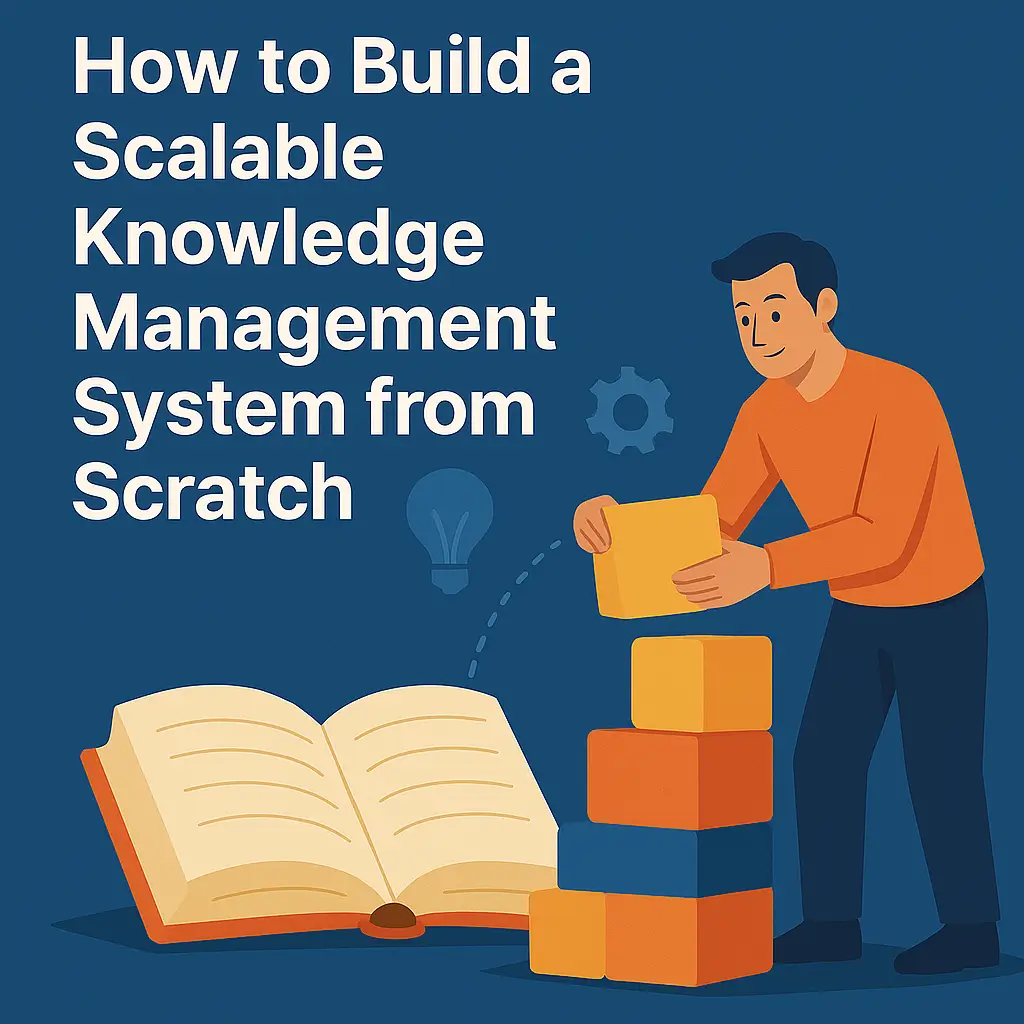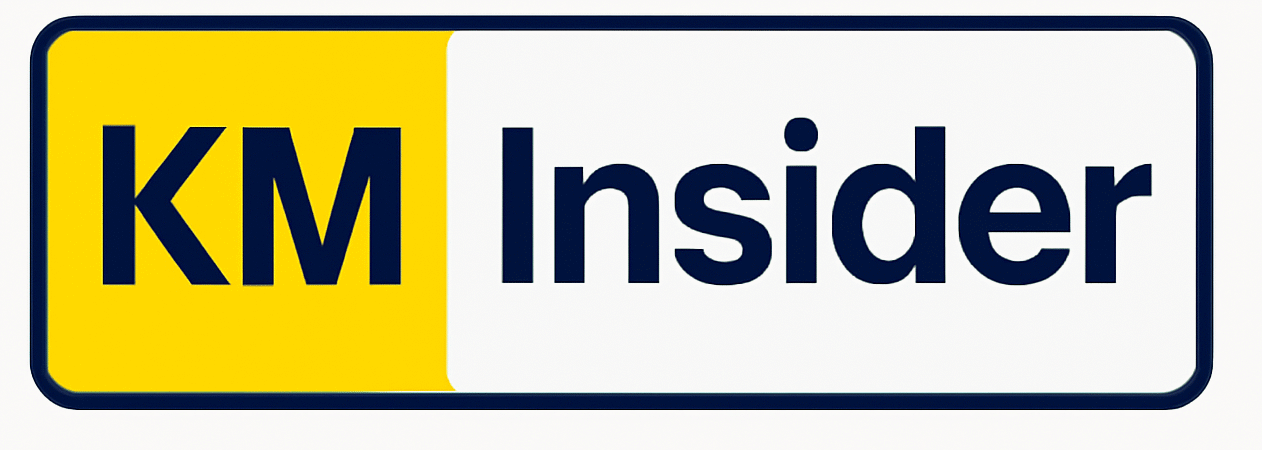Why Knowledge Management Can’t Be an Afterthought
In an era where data flows faster than decisions, knowledge is no longer just a byproduct of operations — it’s a foundational driver of performance, innovation, and resilience. Whether you’re a scaling startup or a global enterprise, building a scalable knowledge management system is one of the most strategic investments you can make.
But here’s the truth: most organizations don’t start with a clear KM strategy. They accumulate documents, policies, and tribal know-how, scattered across tools, folders, and people’s heads. Over time, this chaos erodes productivity, continuity, and the ability to scale.
This guide outlines how to go from zero to a fully functional, scalable Knowledge Management system — one that grows with your organization, supports both tacit and explicit knowledge, and empowers people at every level to work smarter, not harder.

1. Define the Vision and Objectives
Every scalable system starts with clarity. Before selecting tools or frameworks, define what KM success looks like for your organization.
Ask:
- What knowledge is most critical to our success?
- Who needs access to it — and when?
- What problems are we solving (e.g., onboarding delays, knowledge silos, repeated mistakes)?
For example:
- A SaaS company may prioritize technical documentation and cross-team product knowledge.
- A consulting firm may focus on capturing tacit expertise and project learnings.
- A healthcare provider may need real-time access to clinical procedures and regulatory updates.
Your KM objectives should align directly with business outcomes: reducing time-to-competency, improving service quality, accelerating innovation, or minimizing operational risk.
2. Understand the Types of Knowledge You Need to Manage
Scalable KM systems must handle multiple forms of knowledge:
- Explicit Knowledge: Manuals, SOPs, product specs, reports — structured and easy to document.
- Tacit Knowledge: Personal know-how, experience, decision rationale — much harder to capture but extremely valuable.
- Implicit Knowledge: Not yet documented, but could be — like informal workflows or team norms.
You’ll need different strategies to capture, organize, and activate each type. Scalable KM begins when you treat all three as intentional assets, not afterthoughts.
3. Map Existing Knowledge Assets
Before building anything, audit what you already have. Most companies are sitting on a goldmine of underutilized information.
Conduct a knowledge mapping exercise:
- What knowledge exists (documents, databases, minds)?
- Where is it stored (tools, folders, inboxes)?
- Who owns or uses it?
- What’s missing, duplicated, or outdated?
This audit provides the baseline for your KM architecture. It also helps surface “invisible knowledge” — insights that live in people’s heads but aren’t documented anywhere.
4. Design a Scalable KM Architecture
Now, design the system — but with scale in mind from the start.
Your architecture should include:
a. Centralized Knowledge Repository
A single source of truth, searchable and accessible across teams. Examples: Confluence, Notion, Guru, Microsoft SharePoint.
b. Structured Taxonomy and Metadata
Use consistent tagging, categories, and naming conventions. This enables future AI and search tools to surface the right knowledge at the right time.
c. Flexible Permissions and Governance
Define who can access, contribute, and update knowledge. As your organization grows, governance ensures content remains accurate and relevant.
d. Scalable Integrations
Your KM system should integrate with tools people already use — Slack, Teams, CRM, helpdesk systems — to reduce friction and increase adoption.
5. Choose the Right Technology — But Don’t Let It Lead
Technology is an enabler, not the strategy. Choose tools that can evolve with your business and KM maturity.
Look for:
- Strong search and semantic indexing
- AI features (recommendations, auto-tagging)
- Analytics dashboards for usage insights
- Mobile and remote access
- Open APIs for integration
If you’re a small company, start with flexible, low-cost platforms like Notion or Slite. Large organizations may require enterprise-grade platforms like Microsoft Viva Topics, ServiceNow KM, or Bloomfire.
Scalability doesn’t mean going big from day one — it means starting smart, with room to grow.
6. Create Knowledge Workflows, Not Just Content
KM fails when it becomes just a content library. Scalable systems embed knowledge into daily workflows.
Examples:
- Auto-suggest knowledge articles in support tickets
- Integrate SOPs into onboarding checklists
- Provide real-time answers via AI chatbots in Teams or Slack
- Trigger content reviews based on usage or time
Think of KM as knowledge-in-motion, not a static archive.
7. Build a Knowledge-Sharing Culture
Tools and structures mean nothing without adoption. A scalable KM system must be supported by culture.
Encourage:
- Subject matter experts to contribute actively
- Recognition for knowledge-sharing behavior
- Continuous feedback and iteration of KM assets
- Cross-functional participation in KM governance
Knowledge flows best where there’s trust, openness, and shared purpose. Start with champions — and make knowledge-sharing part of how success is measured.
8. Establish Ongoing Maintenance and Measurement
Scalable KM is never “done.” It needs continuous care.
Define:
- Content review cycles (every 3, 6, or 12 months)
- Feedback loops from users (surveys, analytics, comments)
- Archiving or retiring outdated knowledge
- KPIs like:
- Time to find answers
- Article usage
- User satisfaction with KM content
- % of knowledge coverage in workflows
These metrics help justify the KM investment and guide future evolution.
9. Scale in Layers, Not All at Once
You don’t need to boil the ocean. A scalable KM system should be iterative — grow from core needs to broader functions.
Recommended rollout path:
- Start with one team or function (e.g., customer support, product, HR)
- Pilot the system, measure engagement
- Expand to cross-functional areas
- Introduce automation and AI features as you mature
Each layer builds momentum, insight, and adoption. That’s how scalability happens — not by size, but by adaptability.
10. Align with the Future of Work
Finally, your KM system must support how people actually work — hybrid, remote, cross-border, and async.
That means:
- Mobile-first access
- Embedded knowledge in communication channels
- Support for different languages or regional knowledge variants
- Automated surfacing of relevant knowledge in context
KM is no longer about centralizing everything in one tool — it’s about delivering the right knowledge, to the right person, at the right time.
Conclusion: Build to Scale, Not Just to Solve
A scalable knowledge management system is not a luxury reserved for big enterprises — it’s a necessity for any organization that wants to thrive in complexity.
It starts with understanding your knowledge needs, mapping what exists, designing for access and flow, and evolving through culture and data. If you build KM like a living system — not just a filing cabinet — it becomes an engine for decision-making, learning, and growth.
Whether you’re just starting or reinventing, remember: the most scalable KM systems aren’t the most complex — they’re the most connected, intentional, and human-centered.
Subscribe to receive notifications for free webinars on Knowledge Management.
